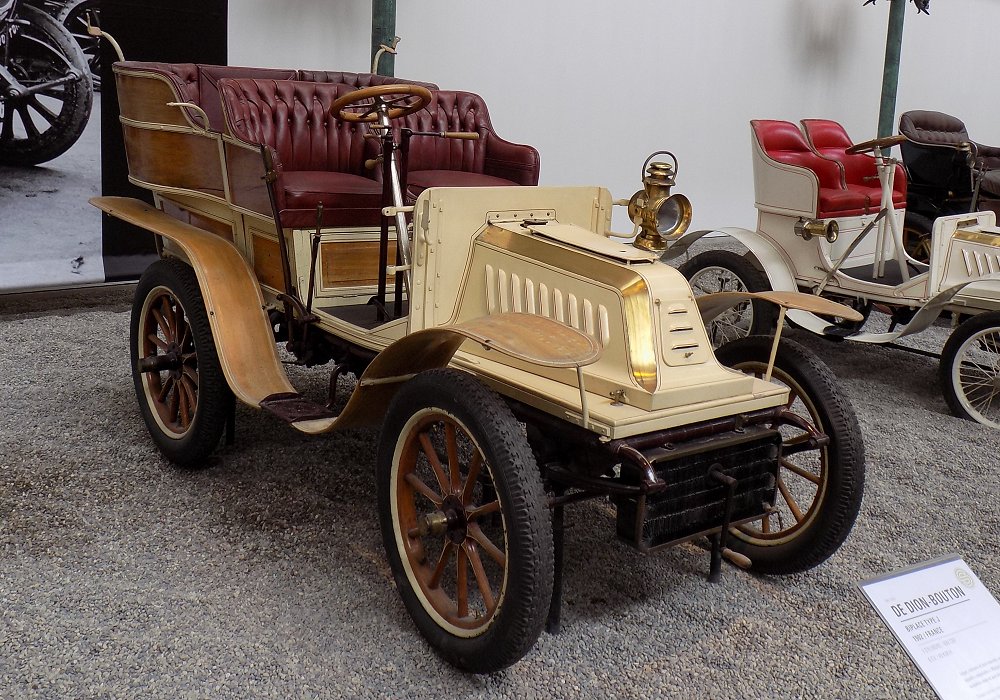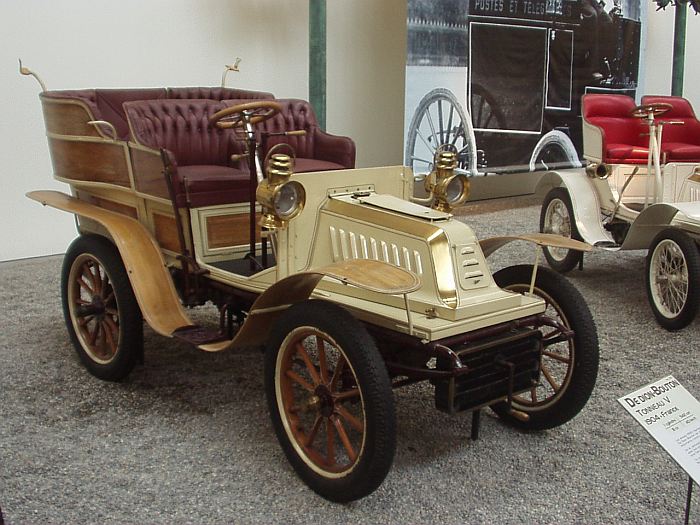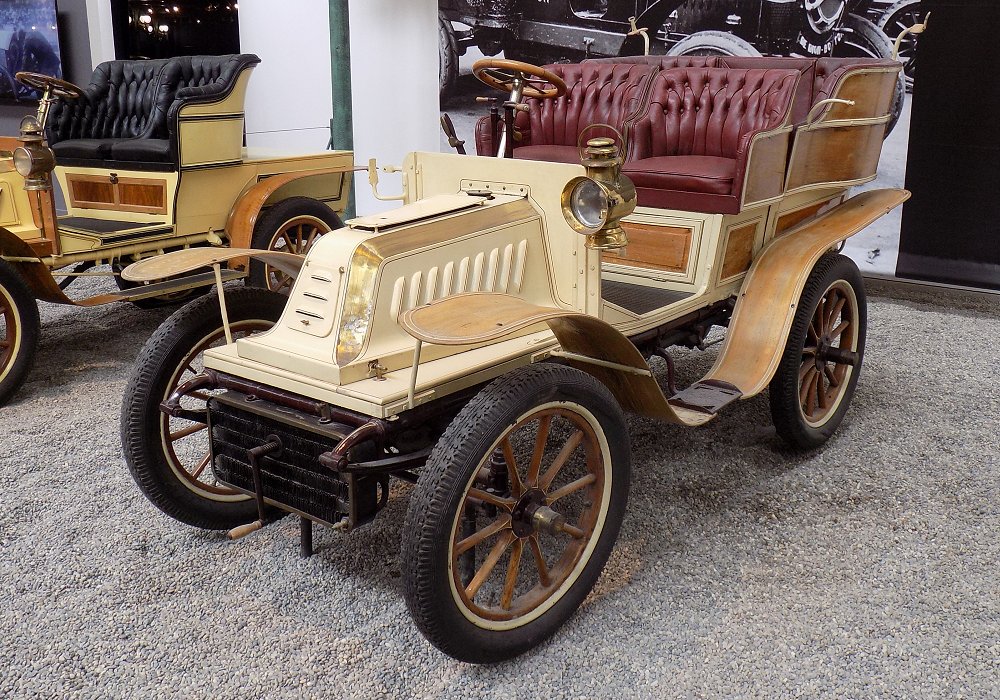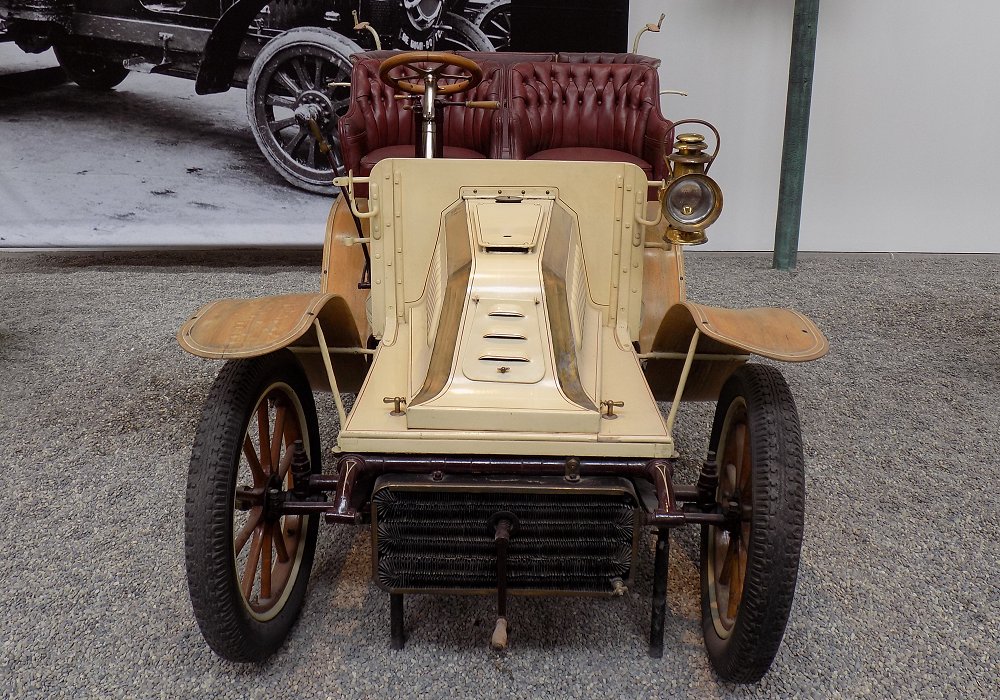Description
The De Dion-Bouton Type V Tonneau was a refined and practical motorcar produced in the early 20th century, during a period when the French manufacturer was recognized as one of the foremost innovators in the automotive world. This model exemplified the company’s continued focus on producing light, reliable vehicles powered by small, efficient engines. The Type V, in particular, was aimed at customers seeking a more spacious car for family or group travel, without sacrificing the mechanical simplicity that defined De Dion-Bouton’s early successes.
At the heart of the Type V was a single-cylinder petrol engine, typically mounted at the rear of the vehicle. This engine produced around 8 horsepower and was based on De Dion-Bouton’s highly regarded high-revving, compact engine design. It featured mechanically operated valves and a magneto ignition system, offering smooth and dependable operation. The power was transmitted to the rear wheels via a two-speed gearbox, with final drive by chain. This drivetrain setup was a hallmark of the company’s vehicles and was known for being durable and easy to maintain.
The Type V was fitted with a tonneau body, a style that included an open rear compartment with side or rear access and wrap-around seating. This made the vehicle ideal for social outings and light touring, especially among the upper-middle classes who were increasingly adopting the automobile for leisure use. The driver and a front passenger sat on a forward-facing bench, while the rear compartment could accommodate two or more additional passengers, depending on the seating layout.
The chassis was light but sturdy, featuring a ladder frame construction with solid axles suspended on leaf springs. This setup provided adequate comfort on the often rough and unpaved roads of the era. The wheels were typically wooden-spoked and fitted with either solid or pneumatic rubber tires. Steering was via a wheel rather than a tiller, reflecting the industry’s movement toward more standardized controls. Braking was basic but functional, with a transmission brake supplemented by mechanical brakes acting on the rear wheels.
The De Dion-Bouton Type V Tonneau reflected the company’s successful formula of combining advanced yet proven mechanical design with an appealing and functional body. It served as a versatile family car at a time when motoring was still a novelty but becoming increasingly practical. Its quiet, dependable performance and elegant styling made it a popular choice among early adopters.
Today, the Type V is an important piece of automotive history. Surviving examples are treasured by collectors for their craftsmanship and for representing a key phase in the development of early passenger cars. It stands as a symbol of De Dion-Bouton’s contribution to making the motorcar accessible, enjoyable, and dependable for a growing audience in the early 1900s.



